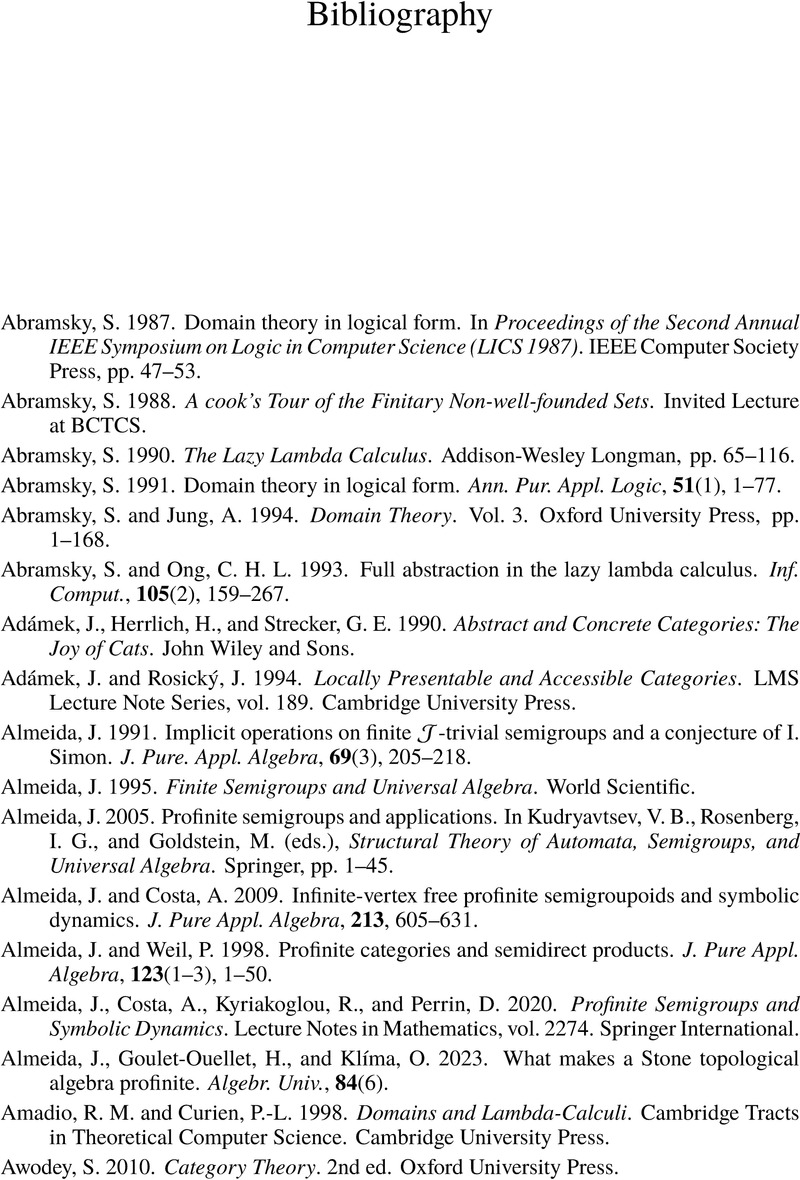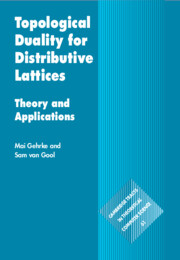Bibliography
Published online by Cambridge University Press: 16 February 2024
Summary

- Type
- Chapter
- Information
- Topological Duality for Distributive LatticesTheory and Applications, pp. 330 - 338Publisher: Cambridge University PressPrint publication year: 2024



